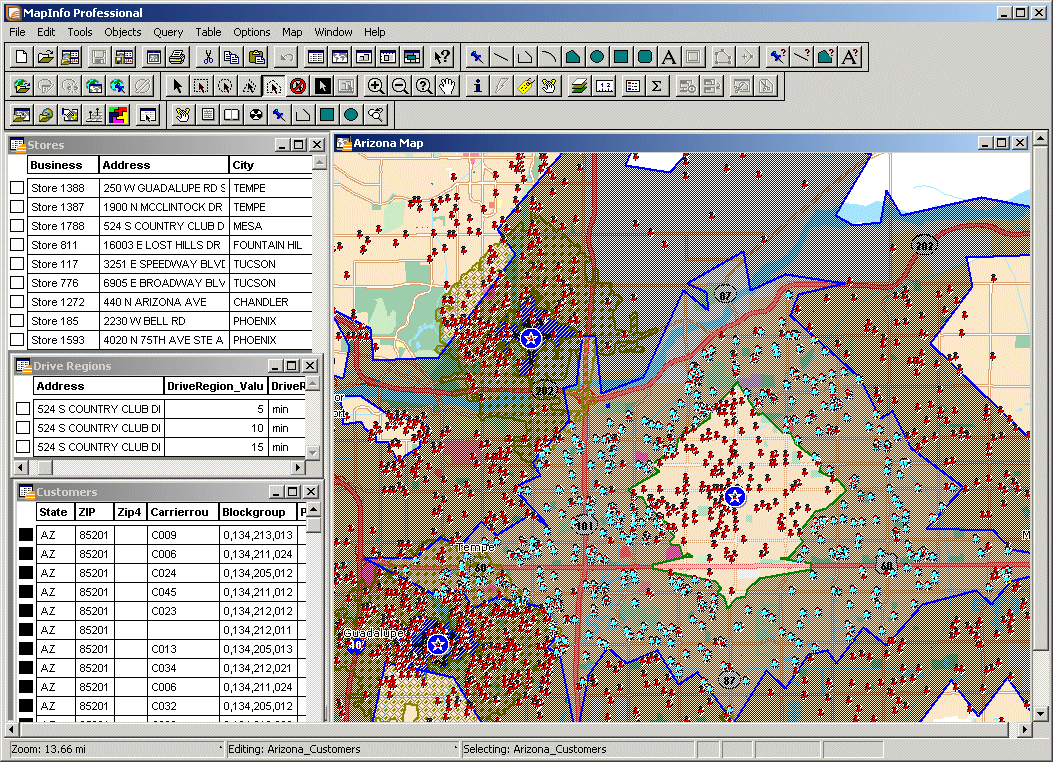

Then, for each column, create a row (including the column name, the column type, a number used to specify the length of the field - only character and decimal type columns created) to illustrate its format. | Southwest Quadrant | Southeast Quadrant | | Nortwest Quadrant | Norteast Quadrant | You can realize the coordinate transformation of geographic elements through " Transform ". The y coordinate of a point in the northern hemisphere is positive and the coordinate of a point in the southern hemisphere is negative. The x coordinate of a point in the United States is negative and the coordinate of a point in Europe ( east of Greenwich ) is positive. All coordinates are stored with respectto the northeast quadrant. When the item " COORDSYS " is not specified, the data is considered to be stored in latitude and longitude. Specifying " COORDSYS " indicates that the data is not stored in the form of latitude and longitude. The columns specified in the " INDEX " table will be indexed. Each number specifies a database column 3 is the third column, 7 is the seventh column, and so on.
MAPINFO MIF FILES SERIES
" Index " indicates the column in the table that has been indexed, and the " INDEX " item includes a number (or a series of numbers). This is how MapInfo's various street maps(StreetInfo) are prepared. In this way, two related tables can be created: one NAME table and one containing other information. At this time, you will put the NAME column in a separate table, and the other columns containing the information of each road section will not be put in that table. Each road has only one name, but the name will be rewritten in every road section. For example, imagine you build a database of highways. What happens to the column specified by UNIQUE is subtle. This number specifies a database column 3 is the third column, 7 is the seventh column, and so on. The default delimiter is Tab if you are using the default delimiter, you don't need the " DELIMITER " line. Specify the separator between quotation marks (ie, "" or '' ), for example: If you are not using any of these character sets, you can specify the correct syntax for your character set by exporting a table and examining the.
MAPINFO MIF FILES WINDOWS
For example: "WindowsLatin1" description file uses the Windows US & Western Europe character set "MacRoman" description file uses the Macintosh US & Western Europe character set or, "Neutral" is to prevent the text from being converted Became another character set. " Charset " specifies the character set used to create the text in the table. Version 300, quoted from Mapinfo 3.0, allows to describe polyline objects composed of multiple segments.

" Version " that you use the MIF version format (VERSION 1, VERSION 2, VERSION 300 300 a medium of ). The following is the description of the MIF file header ( including optional options, the part enclosed by " "in the table below is optional ).
MAPINFO MIF FILES HOW TO
The file header stores the information on how to create the MapInfo table the data area stores the explanation of the graphic objects. The data of MIF file includes two parts - file header and data area. The text data includes one line and carriage return, carriage return and line feed, and line feed between lines. MapInfo data exists in two files - graphics data is stored in. You can also create your own exporting files to MIF file by " MIF ", and then study it in a text editor. Perhaps the best way to understand the MIF format is to take the MIF format description and study a MIF file after reading this article. MIF/MID file uses ASCII encoding, so it is editable, relatively easy to generate, and can work on all platforms supported by MapInfo. This universal format allows ordinary data to be added to a variety of image elements.


 0 kommentar(er)
0 kommentar(er)
